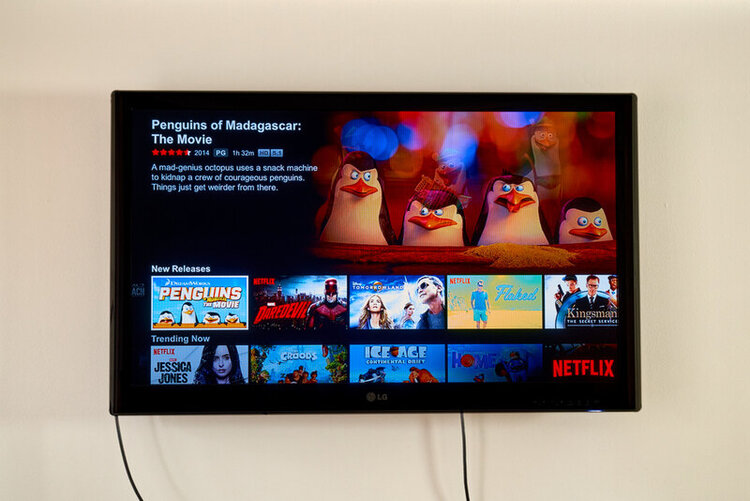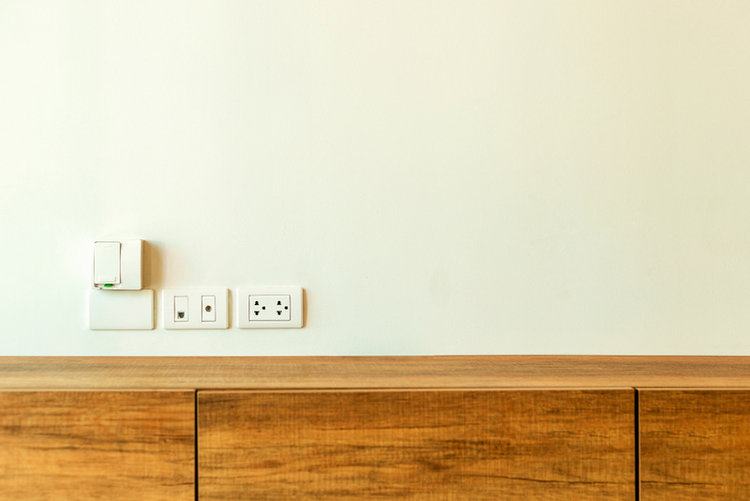Can I Use My LG TV In Another Country?

- LG TVs have region-specific plug types, voltages, and broadcast signals, requiring adapters, voltage converters, or signal converters when used in different countries.
- App availability on LG Smart TVs can vary by region, but users can manually change the region settings to access desired apps.
- LG TV warranties are only valid in the country of purchase, so damages abroad will be out-of-pocket expenses.
Are you considering the possibility of using your LG TV in another country? While it is technically possible to do so, there are some potential snags you don’t want to be unaware of.
In this article, we’ll highlight these issues, explain them, and explore solutions for each of them.
Quick Navigation
5 Factors To Consider Before Using Your LG TV in Another Country
LG is a multinational company of South Korean origin. It designs and manufactures its products in South Korea, China, the US, Mexico, Russia, and other parts of Europe.
The products manufactured in each of these countries are suited to their standards. The specific plug type, voltage requirement, and native broadcast signal of your LG TV depend on where it is manufactured.
Below are factors to consider before shipping your LG TV to another country.
1. Standard Plug Disparities

You’ll probably understand this better if you’ve traveled to other countries. The plug ? that works in your home country can be unsuitable for use elsewhere due to varying plug designs in different countries.
Plug types—and their corresponding sockets/outlets—vary from type A to type 0. Some have an earthen connection (the middle neutral projection) and others don’t.
This variance is because different countries have different tastes, and consequently, have adopted different plug designs. Some countries even have more than two recognized and acceptable standard plug designs.
For instance, the US, Mexico, and Canada all use plug types A and B. Alternatively, the UK, Saudi Arabia, and much of Europe use plug type G.
Check out a full list of countries and their respective plug designs before shipping that LG TV.
Solution
The good news is: you can get around plug disparities with a universal travel adapter . This adapter fits into a US outlet and supports universal plug types. Depending on your destination country, you can get other types of adapters.
2. Different Standard Voltages
Getting a plug that works is only solving a little piece of the problem. You’ll also have to ensure the power outlet supplies a voltage suitable for your TV.

The standard AC voltage—and corresponding frequency—is not the same in every country. The choice is between two major voltage/frequency combinations: 220-240V/50Hz and 110-120V/60Hz.
Countries in North America generally use 110-120V electrical transmission, while European countries supply power at 220-240V. Hence, appliances manufactured in each country are suited to its standard power supply.
LG TVs manufactured in China are built to work with a 220V/50Hz power input, while those manufactured in the USA support a 110V/60Hz power input.
Wondering what happens when you plug a 110V TV into a 220V socket?
A barbecue! The kind you cannot eat.
If you plug a 120V appliance into a 220V outlet, it will catch fire due to overvoltage. Also, if you plug a 220V appliance into a 120V outlet, it will not work because the voltage is insufficient.
As for frequency, a 50Hz appliance can work fine with a 60Hz outlet, but a 60Hz appliance will overheat when used with a 50Hz outlet.
So, if your current LG TV wasn’t manufactured in the country you want to use it in, check for voltage disparities first. If you find any, below are two things you can do about it.
Solutions
- Buy a dual-voltage LG TV
These TVs are designed to work with varied voltages and can work in any country of the world. All you need is to purchase a fitting plug adapter. - Use a voltage converter to control the power supply to your TV
Voltage converters, according to their specification, step up or step down power to match your TV’s requirements. There are also dual-purpose voltage converters that can both step up and step down power.
3. Differing Broadcast Signals
There are three types of TV broadcast signals:
- NTSC (National Television Standard Committee)
- PAL (Phase Alternate Lines)
- SECAM (from French “Séquential de Coleur á mémoire,” meaning Colour Sequential with Memory).
These signal formats encode information that dictates how a picture is displayed on the screen through specifications like frame rate (fps), frame size, and refresh rate. While PAL and SECAM signals are similar, NTSC is quite different.
Differences Between PAL and NTSC Broadcast Signals
| Features | Definitions | NTSC | PAL |
| Frame Size | The series of alternating lines that make up the image | 625 lines | 525 lines |
| Frame Rate | The number of frames per second being shown on a screen to simulate motion | 30 fps | 25 fps |
| Refresh Rate | The frequency at which the screen refreshes the picture lines | 60Hz | 50Hz |
| Color Correction | Picture color consistency/ mode of correction | Inconsistent/Manual correction | Automatic |
Different countries use different broadcast signals. In the time of analog TVs, if your TV didn’t support the broadcast signal of another country, it would not receive those signals or display pictures.
Thankfully, things are different with modern TVs. Your digital LG TV can receive other broadcast signal formats; it only has to convert them to its native format.
We no longer face a total lack of support and image. However—due to the difference in frame rates—you can lose picture quality after signal conversion.
Solutions
- Use a dedicated signal converter
Signal converters are designed to support high-quality signal conversion and video scaling. They output and send digital signals to your LG TV via HDMI. - Buy a Multisystem LG TV
These are LG TVs that can display both PAL and NTSC video broadcast signals.
Note: Most countries no longer use NTSC, PAL, and SECAM signals because they are most applicable to the already-passing analog TVs. Most have adopted digital broadcast systems such as DVB, DVB-T, DTMB, and ISDB.
4. App Availability
The apps available on your Smart TV can be affected by the region it’s located in. Some LG TV users outside the US have remarked that HULU was unavailable outside the country at their various destinations.
By default, your LG TV automatically updates your Location Settings. Hence, you may not be able to access certain apps if you move your LG TV to another country.
Solution
You can easily regain access to your favorite apps by manually changing back to your region.
Here’s a step-by-step process for changing the region:
- Press the Settings ⚙️ button on your remote.
- Scroll down and select All Settings.
- Select General > Location > LG Services Country.
- Uncheck the option: Set Automatically.
- Select your desired country.
- A prompt will appear. Select Yes.
Your TV will now change its region and restart automatically. You’ll regain access to the apps functioning in your selected region.
5. Warranty Terms and Conditions
Before you move your LG TV to another country, know that you cannot claim your warranty in any country other than its country of purchase.
This means that, while you are away, any potential TV repairs would be funded from your pocket.
Conclusion
You can use your LG TV in another country. However, there are a few boxes to check first—you should know and be prepared to deal with the possible challenges.
Appliance specifications differ according to the country in which they were manufactured. Ensure your TV’s plug and voltage requirements match what’s obtainable at the destination country—or find one of the alternatives provided in this article.
Remember, if your LG TV suffers damage while you’re in another country, you cannot claim its warranty there. So, handle it with care.
Gabriella ‘Diogo is a technical writer with a vested interest in tech hardware and equipment. She shares her knowledge and processes in an easy-to-grasp, lighthearted style. When she’s not testing or researching device performance, you’ll find her writing short stories or rewatching episodes of her favorite sitcoms.

